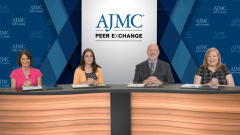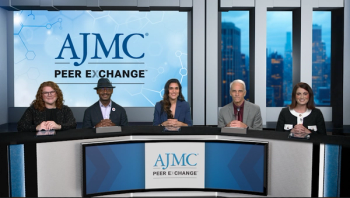
Evolution of Schizophrenia Treatment Shaped by the COVID-19 Pandemic
Panelists discuss the impact of pandemic-influenced process changes and shifting standards of care for the treatment of schizophrenia.
Episodes in this series

John J. Miller, MD: Dr Jones, the COVID-19...pandemic greatly expanded the use of telehealth throughout the nation. What would you state are the pros and cons of using telehealth for the treatment of individuals with schizophrenia?
Nev Jones, PhD: It’s an important question, and I think there really are pros and cons. It’s very much a double-edged sword. You see voluminous literature now emerging on the implementation of telehealth in the wake of COVID-19 with very mixed or competing findings depending on the site, and the type of program. So there are contexts in which, of course, access can be increased through telehealth. There are contexts in which it’s a lot harder to implement. And then there’s the engagement side of it in terms of the tangible differences psychologically, and I would say materially, in somebody showing up for an appointment in person vs through a screen. Some programs, especially in the schizophrenia treatment realm, really do not do well with a telehealth option. So that’s more intensive case management, services that require a more hands-on approach and are community-based in that sense. I think it’s mixed and I think it’s something that we need to continue to dig into more. And really think deeply about the implications, especially around engagement and services, and weighing those. Just continuing to weigh those pros and cons and really understand them in a site- specific way. So, anybody in the audience, the settings that you’re working in across the state, whether it’s rural populations, a lot of suburban and urban, all those things are going to influence where one might ideally go with this.
John J. Miller, MD: Yes, it’s added some pros, but it’s created some cons.Sandy, could you please discuss for us some of the continued barriers to accessing optimal mental health treatment in the post-pandemic world? And if you’d like, [talk] about things like federal funding program changes, Medicaid coverage of telehealth and how that’s changed, or just overall challenges.
Sandy Dimiterchik: What I’d like to talk about are the support groups. What happened with the support groups and with the activity centers, the drop-in centers, and the clubhouses, they all had to close. We lost about 30 of our support groups that are in person. We did end up adding Zoom videos. But for people who are members of these support groups, that is sometimes the only socialization the person gets. They were still able to call in, and we changed it to where they could call as often as they needed to or wanted to. So I guess that was a big thing. Another thing we saw was what happened with the people on clozapine, which was a travesty because they may not have been able to get their blood work done in time because of COVID-19. They may not have been able to see their doctor. And REMS [Risk Evaluation and Mitigation Strategies], which is where you have to have your clozapine checked for white blood cells.
John J. Miller, MD: So when clozapine is started, we check white blood cells weekly for 6 months and then every 2 weeks for 6 months and then monthly.
Sandy Dimiterchik: I understand with Medicaid, just what I’ve read in the news is that it was extended, but now it’s being pulled back a little bit with different states with coverage. Are they talking about that?
John J. Miller, MD: The telehealth?
Sandy Dimiterchik: No, this is just Medicaid in general.
Caroline P. Carney, MD, MSc, FAPA, FAPM, CPHQ: I think you’re talking about redeterminations and people now rolling off of Medicaid.
Sandy Dimiterchik: Yes.
Caroline P. Carney, MD, MSc, FAPA, FAPM, CPHQ: Right. And that’s been a huge problem for the millions of people now dropping off of Medicaid.
John J. Miller, MD: So they’re losing their coverage.…
Caroline P. Carney, MD, MSc, FAPA, FAPM, CPHQ: Yes, because they’re losing their coverage. So during the public health emergency, coverage was extended. Individuals weren’t dropped. Say they had come due to sign up again in February, and February rolled around, they weren’t dropped. Now each month is having a subsequent cohort of individuals who are losing insurance in large part because of navigating the system to be able to do the paperwork to sign up again. Not necessarily because they no longer are eligible. It’s due to both factors, and it is a huge issue right now affecting coverage.
John J. Miller, MD: And when that affects your ability to remain in treatment…
Caroline P. Carney, MD, MSc, FAPA, FAPM, CPHQ: Absolutely.
John J. Miller, MD: It can greatly increase the risk of relapse.
Sandy Dimiterchik: At S&PAA [Schizophrenia & Psychosis Action Alliance] we’re very pro clozapine. I’m very pro clozapine myself. And we recently had a session in [Washington,] DC, and what was discussed was the importance of changing the system for how they do REMS so that you don’t have to have that monthly blood draw. I think in Europe they do it differently. I think it’s a longer time period before you have the blood draw. Because that’s a major inconvenience, for example, if you work, do you have to take off from work so you can get your blood drawn once a month? That’s 12 days.
John J. Miller, MD: The REMS protocol is focused on patient safety because there is a real risk of leukopenia and neutropenia. It’s a lot less demanding than it was when I started. When it was weekly for the rest of your life. But there are some changes taking place to REMS in terms of how monitoring is done and working with pharmacies and submitting the data. But my guess is the monthly will remain because it’s a potentially life-threatening complication. But I agree, it’s a great medication.
Sandy Dimiterchik: [It] changed my life.
Transcript edited for clarity.
Newsletter
Stay ahead of policy, cost, and value—subscribe to AJMC for expert insights at the intersection of clinical care and health economics.








































